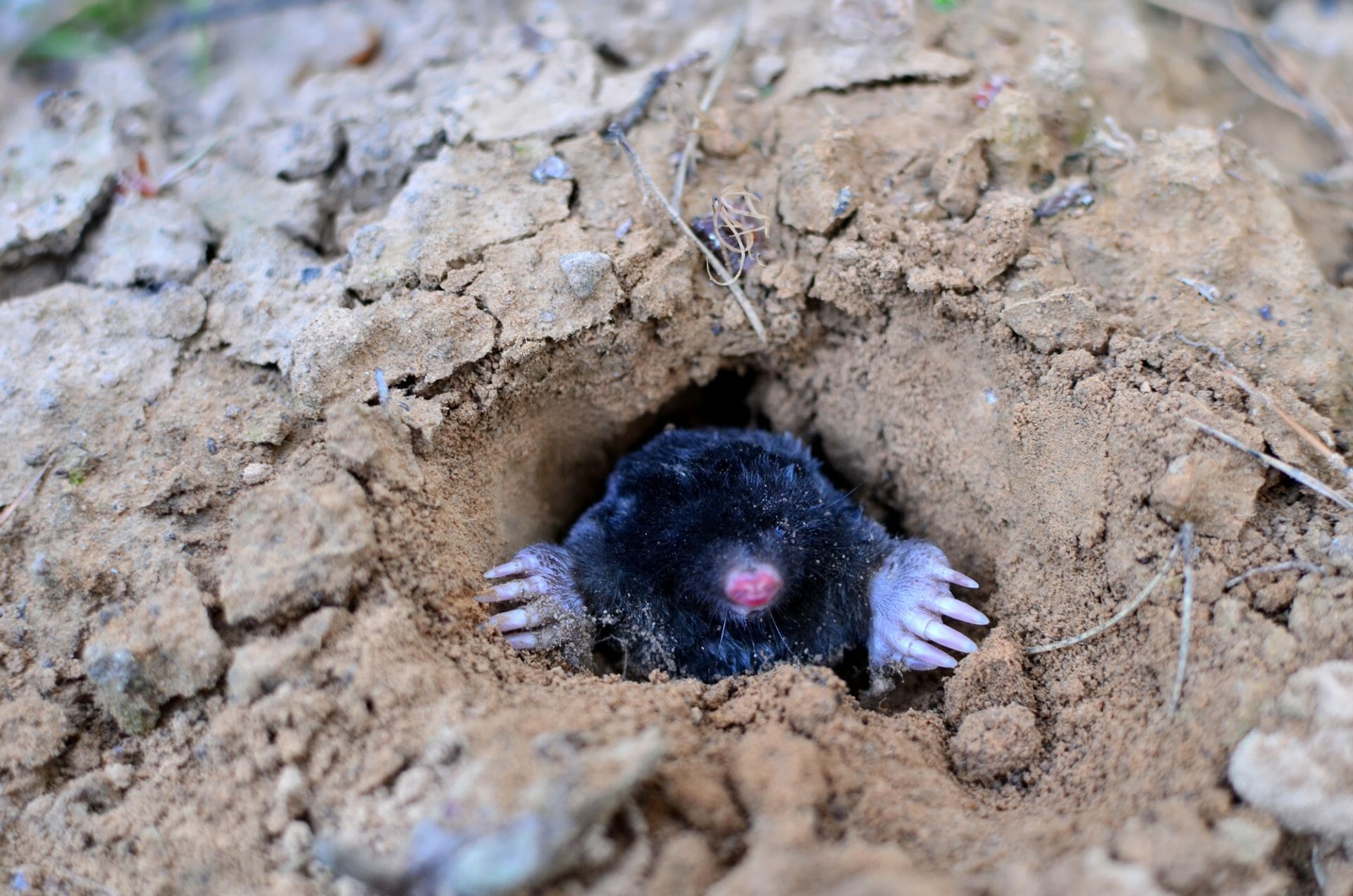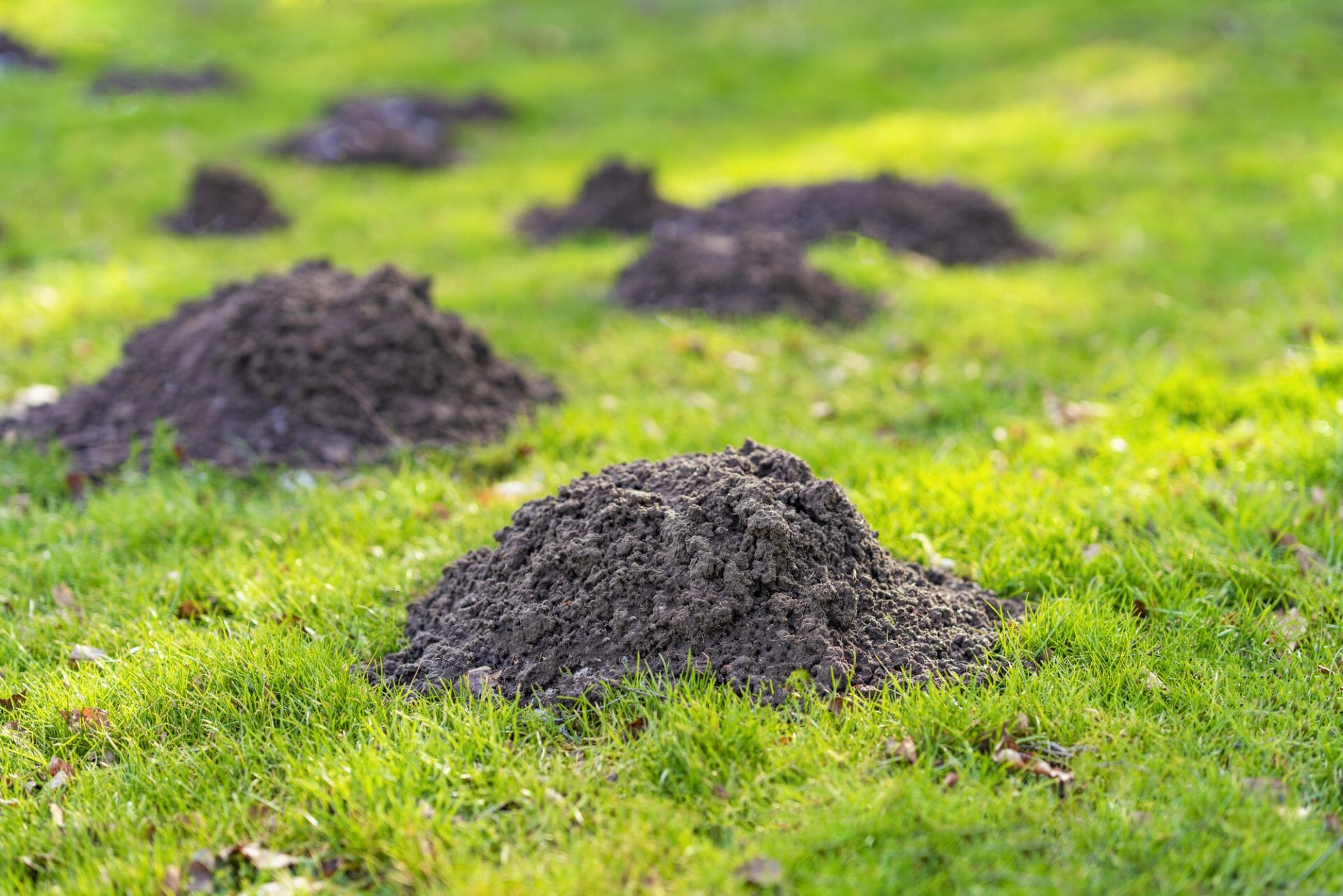
The Damaging Effects Of Moles
We so often discuss the many threats to your lawn, as prevention is important to keep your lawn healthy. Everyone is well aware of the conventional offenders, including disease, pests, and weeds. Our great Texas weather makes for a ripe environment wherein all the aforementioned issues can thrive given the chance. However, as pests are living beings, they love the warm weather. One such pest that you may not always think of, but that can still wreak havoc on your lawn, is a mole. While some think they are rodents, moles are classified as mammals, in the same family as hedgehogs and shrews. Known for their ability to tunnel underground, this feat can become an issue when it happens underneath your lawn. Here is everything you need to know about moles, including their damaging effects.

Moles: The Mammal
Moles are small mammals that are subterranean by nature, with velvet fur, and tiny features. Although their eyes and ears are small, they are well adapted to their dark lifestyle. While they may be considered a pest in your yard, they positively contribute to the local environment with natural aeration ability, and by feeding on small invertebrates. Moles are very solitary creatures, and only group together when mating.
Symptoms of Mole Problem
The most prominent sign that moles are present on your lawn is the iconic molehill and tunneling. You’ll notice that the turf and soil are raised in a tunnel and sinks easily when stepped on. In one form these can look like long ridges of soil created when the mole tunnels around looking for food. When they push up to the surface, they make large piles of soil at the entrance and exit location, resulting in a more conventional molehill. This process can lead to some significant damage to your turf.
Damaging Effects on your Lawn
Mole tunnels do more than dig up the soil in your lawn, they tear up and destroy your root system by all the digging and tunneling. This can create what might look like drought stress in your lawn, with brown patches and decay. The areas in which they tear up turf might need to be reseeded or resodded as everything from the root to the blade is removed. As roots are exposed, your lawn will begin to die due to a lack of nutrients. You can see keeping moles out of your lawn is a must.
What to Do: Prevention and Removal
Now that you know that moles are to be removed, here are some of the ways you can prevent moles from taking residence under your lawn in the first place. Although it may sound funny, adding an owl feeding box to your residence can attract a prime predator of moles. Grubs are also a food favorite of moles and give the same turf decay and discoloration symptoms as the moles themselves so take care of any grub problem quickly. Grubs are probably the worst insect as they eat the roots of your lawn, see more info on grubs from our blog here. If you get rid of the steady diet of grubs that Moles love you’ll possibly get rid of your mole problem, but consultation with Higher Ground is your best bet to see if grub treatments are needed or if a critter control company needs to be contacted to physically trap and remove your mole problem.
Higher Ground Lawn Care and Lighting are ready to take your property to a higher level. Experience why your neighbors and businesses in University Park, TX & surrounding areas choose Higher Ground Lawn Care & Lighting to bring their property to the next level. Give us a call at (682) 206-3596 or check out our website today.
Ready to get started?


